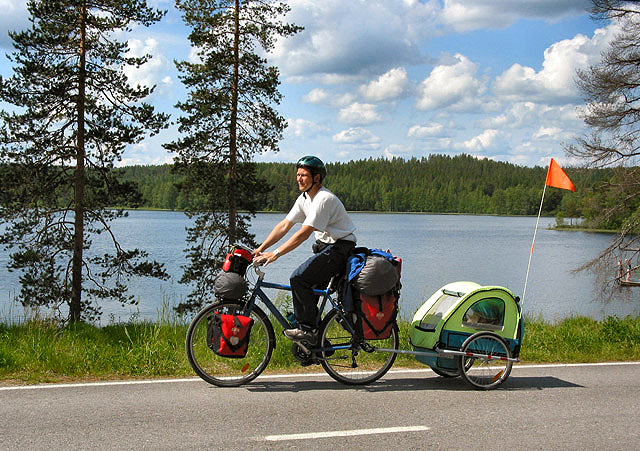In the United States, bikepacking is particularly popular on some of the long-distance bicycle routes that stretch across several states. Some of the routes take weeks to travel.
If you love cycling and outdoor exploration, one of the items on your travel bucket list might be to go bikepacking through parts of the world. Bikepacking combines bicycling and backpacking, allowing you to travel the trails more quickly.
In the United States, bikepacking is particularly popular on some of the long-distance bicycle routes that stretch across several states. Some of the routes take weeks to travel.
If you’re interested in bikepacking these long-distance routes, you should already have some experience with cycling on smaller routes. Plan a few overnight trips to get a feel for what a long-distance trip will be like. Once you’re ready for a longer trip, here is what you need to keep in mind.
Determine where you can (and can’t) bike
If you think you can pick just any trail in the United States and start cycling on it, think again. It is prohibited from bicycling on certain trails, including most parts of the Appalachian Trail. This is due to safety reasons and because of wildlife preservation. Always research a trail before choosing to bikepacking it.
The good news is that there are trails that are perfect for bikepacking. The TransAmerica Trail, Pacific Coast Route, and Mississippi River Trail are among the trails that are bike-friendly. You may also enjoy traveling along the East Coast Greenway, which is a developing trail that will eventually link Maine and Florida.
Maintain your bike before hitting the trails
Since some of the trails may take you into the wilderness where you’re not going to run into other people or have cell phone service, you’re going to want to maintain your bike before your trip. You don’t want to find yourself halfway through a trail with a flat tire. Visit a bike mechanic to make sure your bike is in good condition. They’ll give your bike a tune-up and will make any needed repairs.
Don’t forget that part of bike maintenance is safely transporting your bike. Don’t just haphazardly throw your bike in your truck. Invest in a bike rack or a tailgate pad, such as the ones from here. Also, there are factors to consider when choosing the best 4 bike hitch rack, as it is useful for your trip anywhere.
Plan your route
Once you’ve narrowed down the trail you’re going to be cycling on, take the time to plan your route. Estimate how far you plan to get each day, know where you’re going to be sleeping, and mark off any locations you want to stop off (such as a store to restock supplies or any sightseeing destinations).
Planning your route can help you prepare for how much you need to pack. It can also help keep you safe. Make sure to give a copy of your route to someone who isn’t going on the trip. If you don’t return when you’re supposed to, a search and rescue team can use your plan to help locate you.
Pack accordingly
You’re going to want to pack the essentials for your trip. This includes all of your biking gear (including a repair kit), some sort of shelter and sleeping system, a way to cook on the trails, a water filtration system, several cycling outfits, wool sweater, a waterproof coat, hygiene items, a first-aid kit, and a navigation system. If you’re traveling in the winter, you’ll also need cold-weather accessories. And, of course, you’ll need a really good backpack to keep it in!
Going on several overnight trips before your long-distance trip can help you determine what is essential and what isn’t. Keep in mind that you can restock hygiene items and food along the way.
Remember to pace yourself
Remember that this is a journey, not a race! To keep yourself safe and healthy on your trip, pace yourself accordingly. There isn’t any need to rush through the trail. To prevent fatigue, find a balance between resting and cycling. Take time to stop for small breaks. When stopped, make sure to eat a healthy snack and rehydrate.
Keep in mind that you’re also carrying a heavy backpack in addition to cycling. You might not be able to go as quickly as you could if you weren’t also backpacking. You might be able to increase your speed while on flat roads, but while on rugged trails, keep a steady pace.
Conclusion
If you’d rather spend your days being one with the wilderness instead of lounging on a beach, a long-distance bikepacking trip could be just want you need. Bikepacking can be a great way to explore the United States. Just remember to plan your trip in advance and take care of yourself while on the trails.







































































































































































